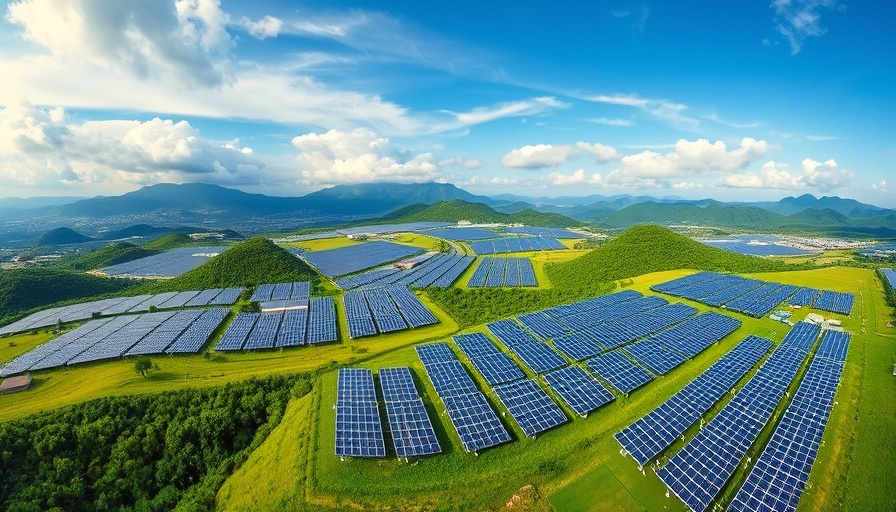
China's Renewables Take the Lead: A Game-Changer for Energy
For the first time in history, China’s solar and wind energy capacity has surpassed that of thermal energy, predominantly coal-powered. As reported by the National Energy Administration, the nation boasts a cumulative installed capacity of 1.482 billion kilowatts of renewable energy, outpacing thermal capacity, which stands at 1.451 billion kilowatts. This monumental shift illustrates an accelerating transition towards sustainable energy sources, a critical component in China’s strategy to peak carbon emissions by 2030 and achieve carbon neutrality by 2060.
The Rapid Growth of Renewable Energy
Despite still deriving over half of its energy from coal, China is making significant strides in renewable power generation. In the first quarter of 2025 alone, newly installed photovoltaic and wind power capacity reached 74.33 million kilowatts, leading to an impressive increase of 22.5% in electricity generation from these sources. This growth trajectory suggests that energy generated through wind and solar will maintain its lead as installations keep rising rapidly, with predictions for 2,461 gigawatts of installed renewable capacity by 2030—doubling the output from 2022.
Global Impact: Setting the Standard
China's unprecedented contribution to global renewable energy has not gone unnoticed. It accounted for more than half of the global increase in solar and wind generation in 2024. As the world's largest electricity consumer, China’s ambitious targets have global implications—setting standards and influencing international energy policies. The swift enhancement of China's renewable portfolio is crucial in addressing climate issues, as it provided over 80% of demand growth met through clean generation in the past year.
Future Predictions: The Commitment to Clean Energy
China’s determination to combat climate change remains unwavering, irrespective of the shifting international landscape. President Xi Jinping reaffirmed the nation’s resolve to enhance climate efforts, stating they would not “slow down.” With the announcement of new Nationally Determined Contributions (NDCs) ahead of the COP30 Climate Conference, China is poised to galvanize its climate commitments across various greenhouse gases, not just carbon dioxide.
Local vs. Global Perspectives on Renewable Energy
While local air quality improvements and energy independence are key motivators for China's renewable push, the global ramifications are equally significant. As more countries look to China’s example, the potential for collaboration on clean technologies and shared methodologies could reshape global energy landscapes.
Conclusion: A Turning Point for the Energy Sector
This landmark victory for renewable energy marks a turning point not only for China but for the global energy sector at large. As the world watches, the implications of this shift could propel nations everywhere to accelerate their own transitions toward sustainable energy.
 Add Row
Add Row  Add
Add 




Write A Comment